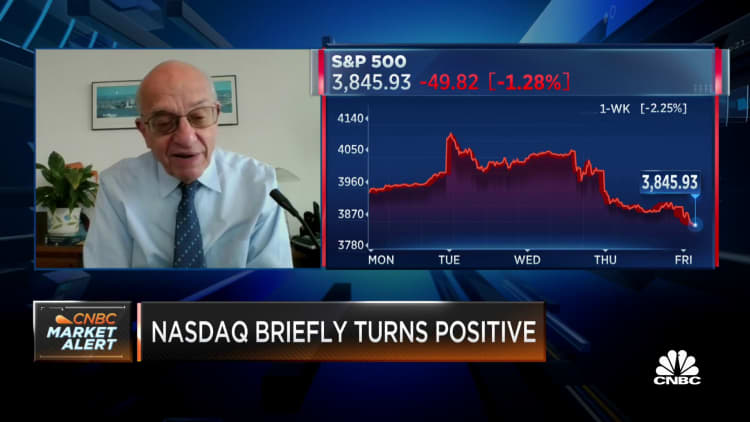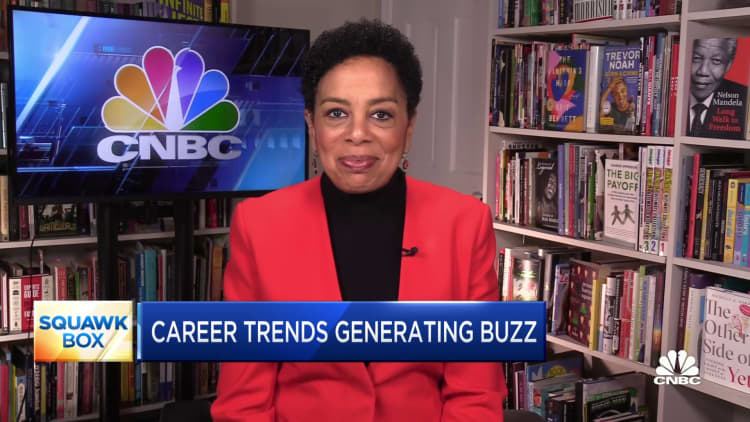Whenever Chelsea McLin was “fed up” with her job — whether it was because she received a passive aggressive email or got more work than she could manage — she would think to herself, “Let me fly somewhere.”
She then applied for a bunch of jobs, sometimes four to five a day, she told CNBC Make It.
“I was just overwhelmed and stressed all the time. I was like, I don’t like the person I am right now. I want to move before I actually hate this job,” said McLin, who was working as a coordinator at a nonprofit organization.
The 27-year-old is among many young workers who identify with “rage applying,” a term that recently went viral on TikTok.
A TikTok user who goes by redweez started the conversation with a video she posted in December.
“I got mad at work and I rage applied to 15 jobs,” she says in the video, which has racked up 2.3 million views as of the publication of this article.
But most workplace experts CNBC Make It spoke to said the phenomenon isn’t new, though the term for it is.
“Applying for new roles because you’re frustrated with your pay, manager, co-workers … are age old reasons why employees have always looked to move on,” said Amy Zimmerman, the chief people officer at Relay Payments.
Rage applying is also an act of “revenge” for employees who feel unappreciated and overlooked, added Mike Bergen, who leads Kingsley Gate Partners’ global human resources practice.
It’s a more aggressive evolution of what frustrated … team members are doing following the “quiet quitting” phenomenon. It’s a more active way to respond to one’s dissatisfaction.
Amy Zimmerman
Chief People Officer, Relay Payments
“[That is done] in the hope that you land an offer that … ideally increases your job satisfaction and overall happiness.”
Rage applying is a “more aggressive evolution” of what frustrated workers are doing following the “quiet quitting” phenomenon, Zimmerman added.
“It’s a more active way to respond to one’s dissatisfaction.”
‘Chronic reasons’ for rage

“I think rage applying has resonated so much because there’s a lot of unrest in the workforce right now,” said Jenna Greco, a career coach.
“Many people are feeling undervalued, unsupported and unhappy in their jobs and they’re looking for any way to fix it.”
Bergen added that it is important to understand that younger generations are “facing financial hardship” not seen in decades.
“That includes very high inflation and interest rates, rising costs of consumer goods and housing, as well as staggering student debt,” he said.
“Taking all of these things into consideration, it’s easy to understand why many are feeling angry.”
When I was rage applying, it was a way for me to feel like I had control over my life. Like, I don’t have to be here, I can go.
Since 2021, employees have been enjoying a “golden era” of greater negotiating power — and the ability to command more pay as demand for labor surges after the height of the pandemic.
That is no doubt a major draw for professionals who were or want to be part of “the big quit” and “rage applying.”
McLin said that while she saw rage applying as more of a “coping mechanism,” what was unexpected was the 30% pay bump she was offered for her next role as a project coordinator.
“When I was rage applying, it was a way for me to feel like I had control over my life. Like, I don’t have to be here, I can go,” she told CNBC Make It in a virtual call.
“And then when I found out that this job paid me like $14,000 more [annually], it became more about money.”

Similarly, the TikTok user behind the viral video said that she got a “$25,000 raise” from rage applying.
However, experts CNBC Make It spoke to said that the potential for pay raises exist “any time” someone makes a job switch, not just when rage applying.
“There are a lot of comments on TikTok about ‘big pay increases’ and ‘landing my dream job’ and while I’m sure there are certainly instances of those things, I think there are more drawbacks,” said Greco.
When rage applying backfires
What makes rage applying different from a typical job search is also the mass application to “any job” that will get workers out of the one they’re in now, said Greco — even if one is clearly unqualified for it.
For example, McLin said, she applied to jobs “everywhere” and some of those positions were chosen at “random.”
“There were a lot of tech jobs, project management jobs … I don’t know if I’m qualified, but I might as well put it out there.”
The high that comes from a potential pay bump at another toxic job is going to wear off pretty quickly.
That’s perhaps why out of more than 50 jobs that she applied to in two months, McLin received only one interview opportunity.
“A quarter of those jobs said ‘thanks but no thanks’, the rest didn’t respond. I got one request for an interview from the job that I ended up accepting,” she added.
The downside of “spraying your resume out there and seeing what sticks” is having to deal with the possibility of rejection, said Greco.
“The rejection emails wear down your confidence. I saw a TikTok the other day that said, ‘Just got another rejection email from a job I don’t remember applying to at 3am,'” she added.
“Why put yourself in a position to get rejection emails from jobs you don’t even care about or remember applying to? It can fuel more frustration in your current job.”
She added that rage applying is “a very reactive way” to job search, which can be detrimental in the long run.

“You have the potential to jump from the frying pan into the fire. When you haven’t taken the time to really get clear on what you want in your next job and target roles that align with that, you’re just sending out applications hoping the next job will be better,” she said.
“The high that comes from a potential pay bump at another toxic job is going to wear off pretty quickly.”
Bergen agreed, saying that those who stay happy with their new jobs are the ones who “take an organized and structured” approach to their job search.
“Not many of us make rational and objective decisions when we are angry. I would recommend that candidates take time to develop questions that hiring managers can answer,” he added.
“Those answers can help showcase to that candidate whether they’re culturally and skills-wise a fit for the organization that they’re looking to join.”
A ‘red flag’ for employers
In addition, experts that CNBC Make It spoke to said that hiring managers can also tell when candidates are rage applying, which is “a red flag” they take note of.
A dead giveaway? When a candidate “haphazardly” applies to multiple roles within a company, said Vicki Salemi, a career expert from Monster.com.
A tell-tale sign of rage applying is when candidates pursue about a dozen different jobs — and I do mean different — at all levels … in a variety of departments and geographic locations.
Vicki Salemi
Career expert, Monster.com
“A tell-tale sign of rage applying is when candidates pursue about a dozen different jobs — and I do mean different — at all levels … in a variety of departments and geographic locations,” she added.
“They always crashed and burned during the interview process. They seemed unfocused and scattered.”
Other signs include submitting a generic resume that isn’t customized, using LinkedIn Easy Apply and providing nothing in the application that shows you’re excited about that specific role, Greco said.
“The competition for roles is tough. There are jobs that have more than 300 applicants so you need to differentiate yourself. Employers want employees that are excited about the job opportunity and show why.”
Benefits of rage applying
Nevertheless, apart from potential financial gains, rage applying and going for interviews — should you secure any — could be beneficial, said Bergen.
“It’s always good to have a clear sense of your value in the market, to constantly be expanding your professional network and gaining competitive intelligence,” he added.
“Finally you can never have enough practice interviewing.”

 EU News Digest Latest News & Updates
EU News Digest Latest News & Updates


